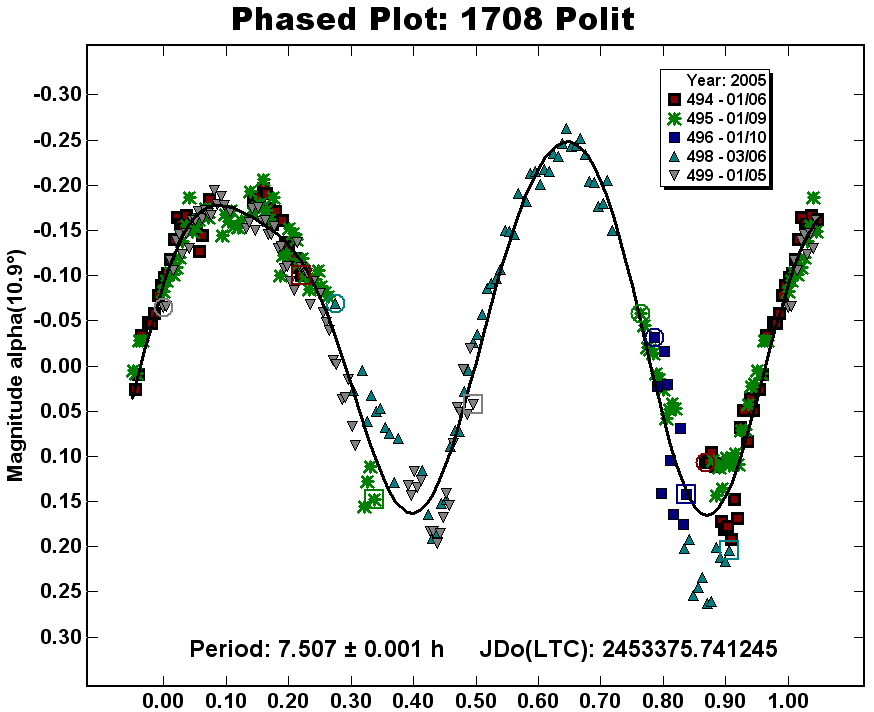
2005 lightcurve results for 1708 Polit. Derived period 7.507 ± 0.001 hours. Amplitude 0.40 ± 0.05 magnitude.
1708 Polit is a main belt asteroid with an estimated diameter of about 25 km. It was discovered on November 30, 1929 by Josep Comas Solà at Barcelona. The semi-major axis is 2.92 AU, the eccentricity is fairly large at 0.305 and the inclination is 6.036 degrees.
I first observed this asteroid on five nights between January and March 2005. Although the data was a little patchy in places, a good lightcurve was obtained with a period of about 7.507 hours.

Further observations were made over six nights during May and June 2011. This data resulted in a very good lightcurve with a period of about 7.5085 hours, which very closely matched the 2005 result.
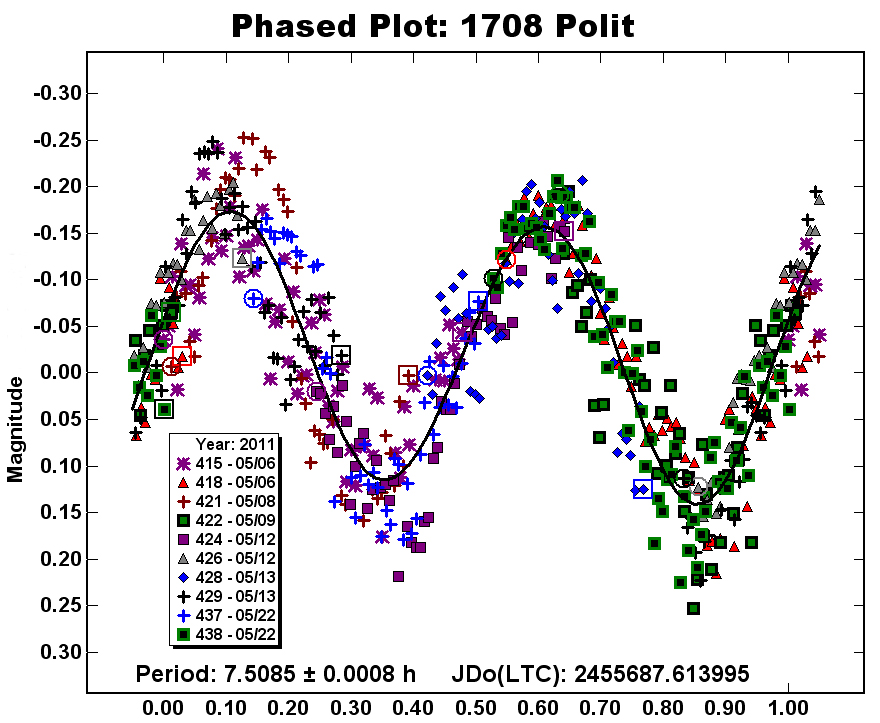
The main reason for observing the asteroid the second time was to use the extra data to model the asteroid's shape. Although using only 2 oppositions does not constrain the model very much, (3 or 4 oppositions would be better) it was a start, and a reasonable result was obtained. The results of this work were presented at the 2012 SAS workshop and conference.
The first step in the shape model analysis was to use the lightcurve data to derive a sidereal period, which was then applied in a pole search that generated a “map” of possible pole solutions. This is shown below.
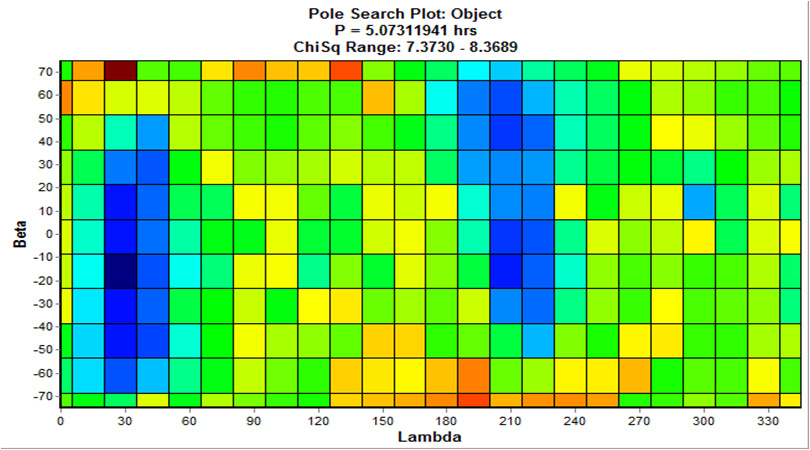
These results were then refined by running the search again using one of the two solutions as a starting point and allowing the longitude and latitude of the pole as well as the sidereal period to float. The final result showed two possible solutions. One at lambda = 27 degrees, beta = -33 degrees, period = 7.50837340h, and the second at lambda = 210°, beta = 47°, period = 7.50832256 h. The resulting models are shown below.
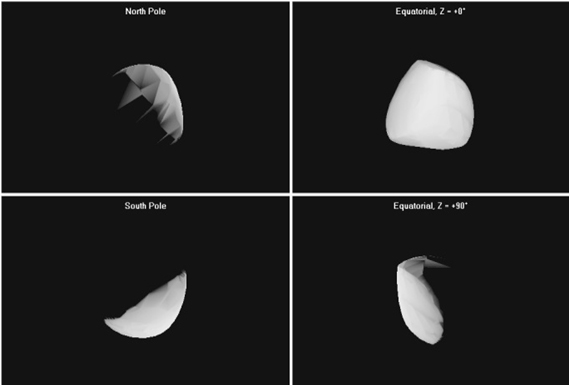
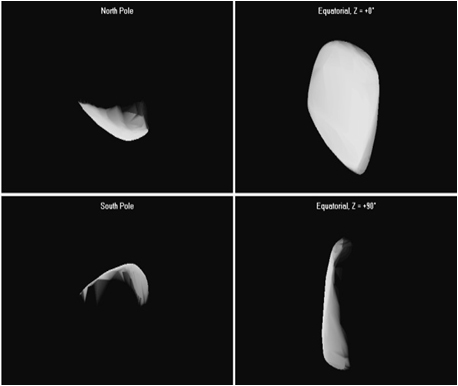
Of the 2 possible solutions, the one at (210 degrees, 47 degrees) is preferred. The reasons for this preference are the spin axis is much more closely aligned with the shortest axis of the asteroid with the (210°, 47°) solution, and the preferred model more closely matches the observed lightcurve, although the difference is slight. More observations are planned for future oppositions to try to refine this model.